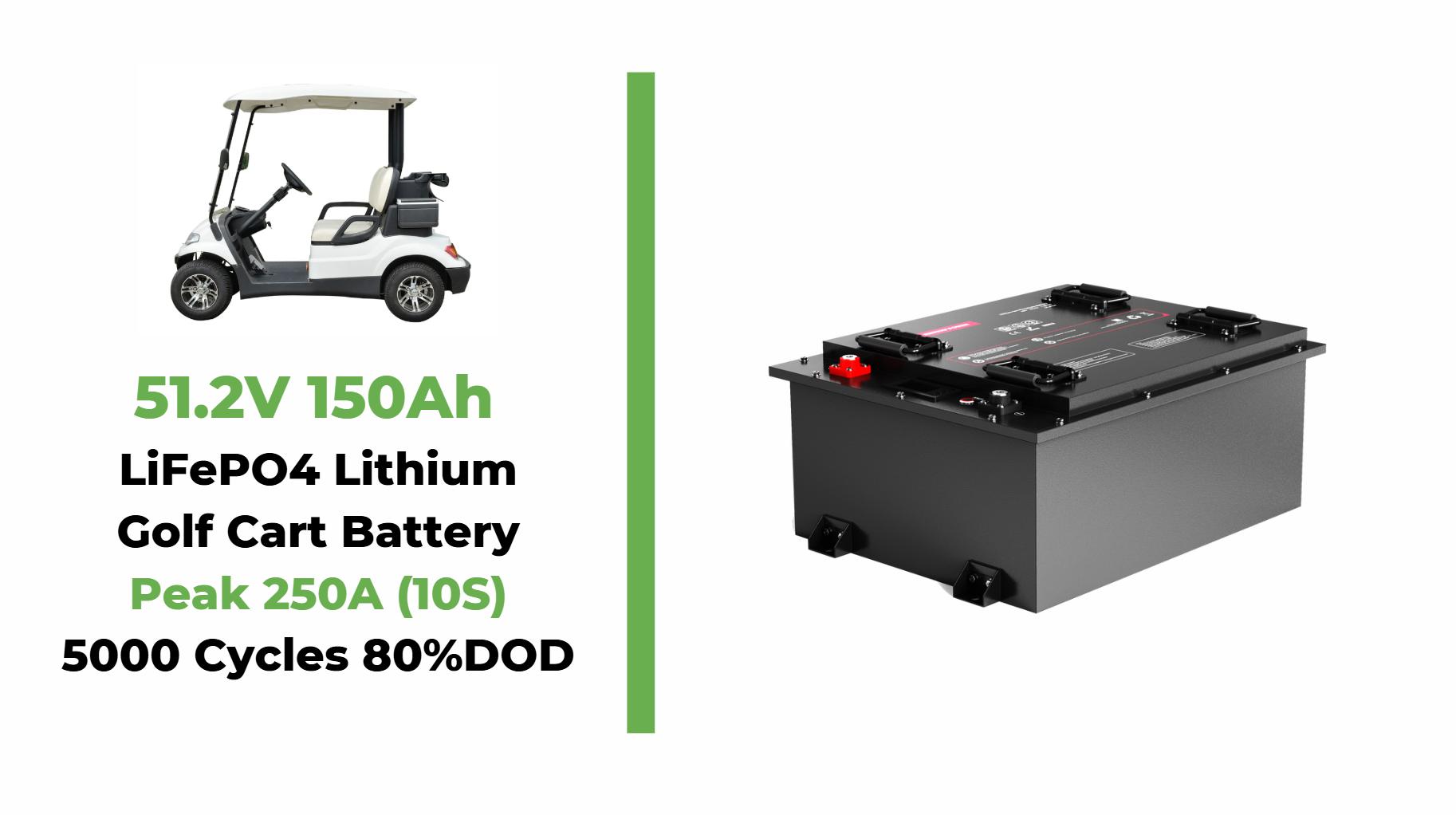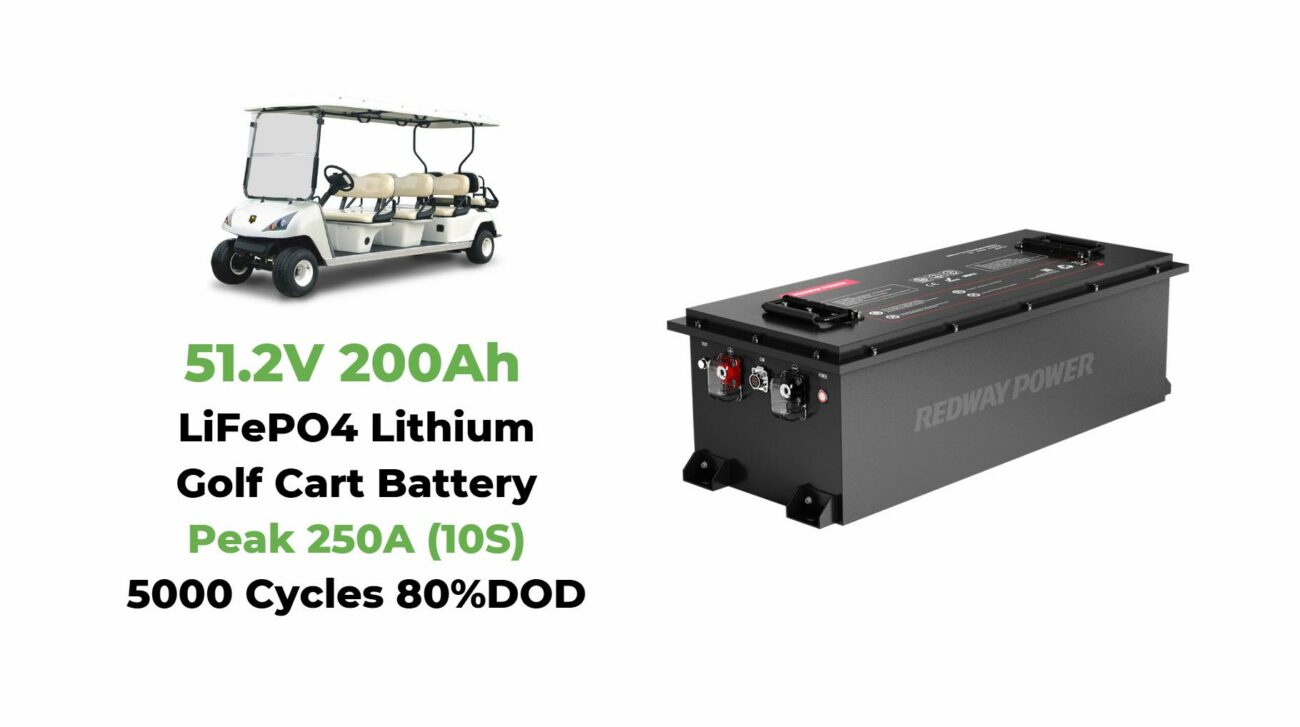
What to Know About the 150Ah Golf Cart Battery
A 150Ah (ampere-hour) golf cart battery provides extended runtime and power for electric golf carts. Its capacity determines how long the cart can operate between charges, with 150Ah offering a balance of endurance and efficiency. Key factors include battery chemistry (lead-acid vs. lithium-ion), maintenance requirements, lifespan (3–10 years), and compatibility with cart voltage systems (6V, 8V, or 12V configurations).
How Does the 150Ah Rating Impact Golf Cart Performance?
The 150Ah rating indicates the battery’s energy storage capacity. A higher Ah allows longer drives on a single charge, supporting 18–25 miles depending on terrain and load. For example, a 48V system with four 12V/150Ah batteries provides ~7.2 kWh of energy, enabling 4–6 hours of continuous use. Properly sized batteries prevent voltage drops and motor strain.
What Factors Affect the Lifespan of a 150Ah Golf Cart Battery?
Lifespan depends on discharge depth (avoid below 50%), charging habits (use smart chargers), and temperature extremes. Lead-acid batteries last 3–5 years with maintenance, while lithium-ion variants endure 8–10 years. Corrosion, sulfation, and improper storage accelerate degradation. Regular water topping (for flooded lead-acid) and voltage checks add 20–30% lifespan.
Which Maintenance Practices Prolong a 150Ah Battery’s Life?
Clean terminals monthly with baking soda to prevent corrosion. Check electrolyte levels every 2–3 weeks in flooded batteries. Equalize charges quarterly to balance cells. Store at 50–80% charge in cool, dry environments. Avoid overcharging (above 14.6V for 12V lead-acid) or deep discharges below 10.5V. Use distilled water—never tap water—for refills.
James Carter, battery expert: “Equalizing charges is critical for flooded lead-acid batteries. It reverses sulfation buildup that can permanently reduce capacity by 25% in just six months.”
Seasonal maintenance adjustments are equally important. In humid climates, apply anti-corrosion spray to terminals every 45 days. For lithium-ion batteries, firmware updates for battery management systems (BMS) optimize cell balancing. Track charge cycles using a voltmeter – lead-acid batteries showing consistent voltage drops below 12.4V under load may require replacement.
| Maintenance Task | Lead-Acid Frequency | Lithium-Ion Frequency |
|---|---|---|
| Terminal Cleaning | Monthly | Quarterly |
| Voltage Check | Biweekly | Monthly |
| Full System Diagnostics | Annually | Biannually |
Why Does Temperature Influence 150Ah Battery Efficiency?
High temperatures (above 95°F/35°C) increase water loss and corrosion, reducing capacity by 15–20%. Cold (below 32°F/0°C) slows chemical reactions, cutting output by 30–40%. Lithium-ion batteries outperform lead-acid in cold, retaining 85% capacity at -4°F/-20°C. Insulate batteries in extreme climates and avoid charging frozen lead-acid units.
Thermal management becomes crucial in desert environments where battery compartments can exceed 120°F. Install heat-resistant battery trays and maintain 1-2 inch airflow gaps between cells. Below freezing, pre-warm lithium batteries to 32°F before charging. Lead-acid batteries experience permanent capacity loss if charged below 20°F – a common issue in northern golf courses during early spring operations.
| Temperature Range | Lead-Acid Efficiency | Lithium-Ion Efficiency |
|---|---|---|
| 95°F+ | 80-85% | 92-95% |
| 32°F–95°F | 100% | 100% |
| Below 32°F | 60-70% | 83-87% |
Can You Upgrade to Lithium-Ion 150Ah Golf Cart Batteries?
Yes. Lithium-ion 150Ah batteries weigh 50–60% less than lead-acid, boosting cart speed and range. They require no maintenance, charge 3x faster, and tolerate deeper discharges. However, upfront costs are 2–3x higher ($1,200–$2,500 vs. $600–$1,200 for lead-acid). Ensure the cart’s controller and charger support lithium profiles to avoid damage.
How Do You Safely Recycle a 150Ah Golf Cart Battery?
Lead-acid batteries are 99% recyclable. Take them to auto shops, recycling centers, or retailers (often for store credit). Lithium-ion recycling is less widespread—contact manufacturers or e-waste facilities. Never dispose of in trash: lead and electrolytes are toxic. U.S. federal law mandates lead-acid recycling; fines reach $10,000 for improper disposal.
Expert Views
“The shift to lithium-ion in golf carts is irreversible,” says James Carter, a 20-year battery industry veteran. “A 150Ah lithium pack cuts energy waste by 40% compared to lead-acid. Clubs report 30% lower maintenance costs and 15% faster course turnaround. But proper battery management systems are non-negotiable—cheap BMS units risk thermal runaway.”
Conclusion
The 150Ah golf cart battery is a critical investment for performance and reliability. Whether opting for traditional lead-acid or modern lithium-ion, understanding capacity, maintenance, and environmental factors ensures optimal lifespan and cost-efficiency. Regular care and smart upgrades align with evolving industry standards, keeping carts running longer and smoother.
FAQs
- How long does a 150Ah battery last per charge?
- Typically 4–6 hours of continuous use, translating to 18–25 miles depending on load, hills, and speed.
- Can I mix old and new 150Ah batteries?
- No. Mixing ages causes imbalances, reducing performance and lifespan. Replace all batteries in a pack simultaneously.
- What’s the cost difference between lead-acid and lithium-ion?
- Lithium-ion costs 2–3x more upfront ($1,200–$2,500) but saves 50% long-term via lifespan and efficiency.

